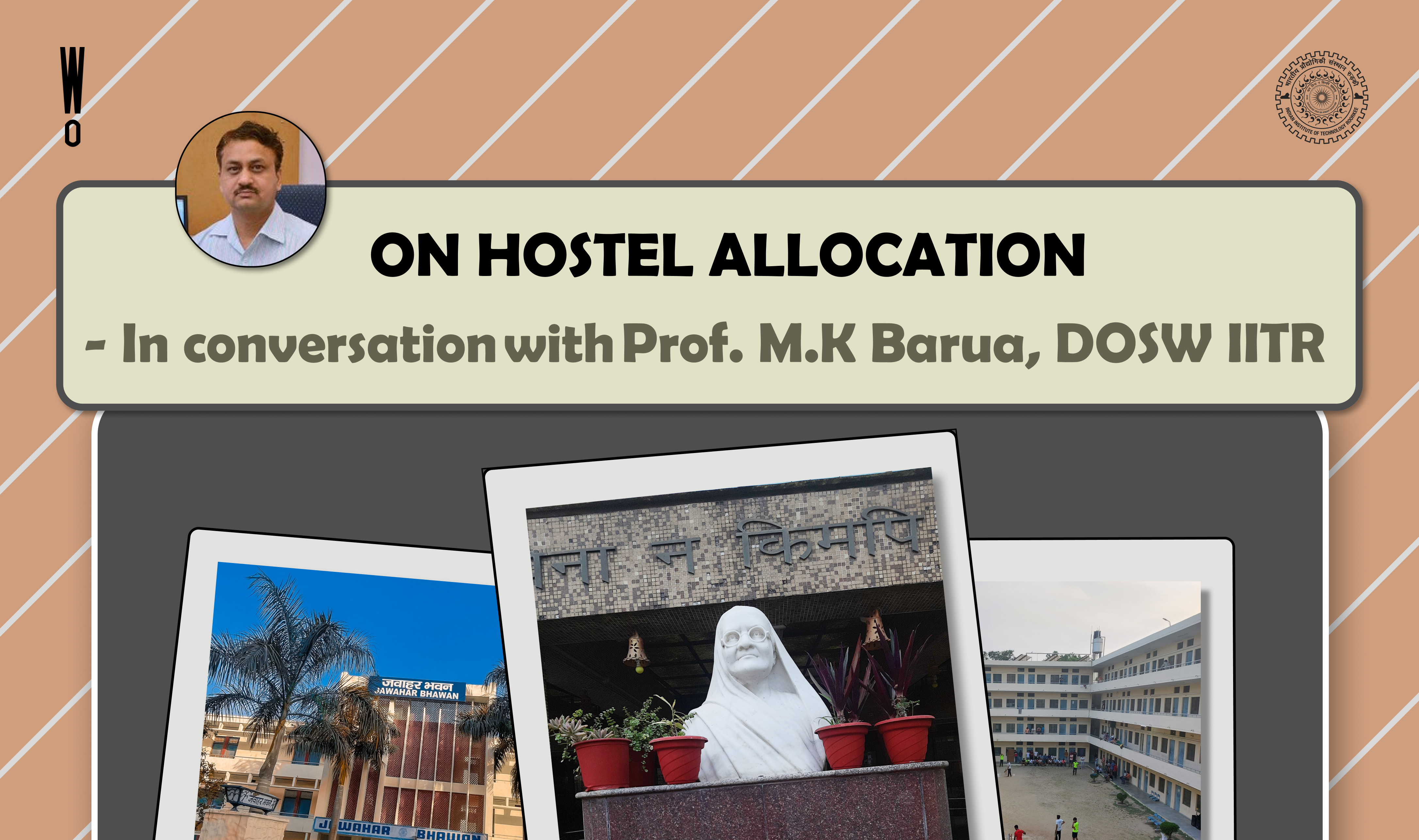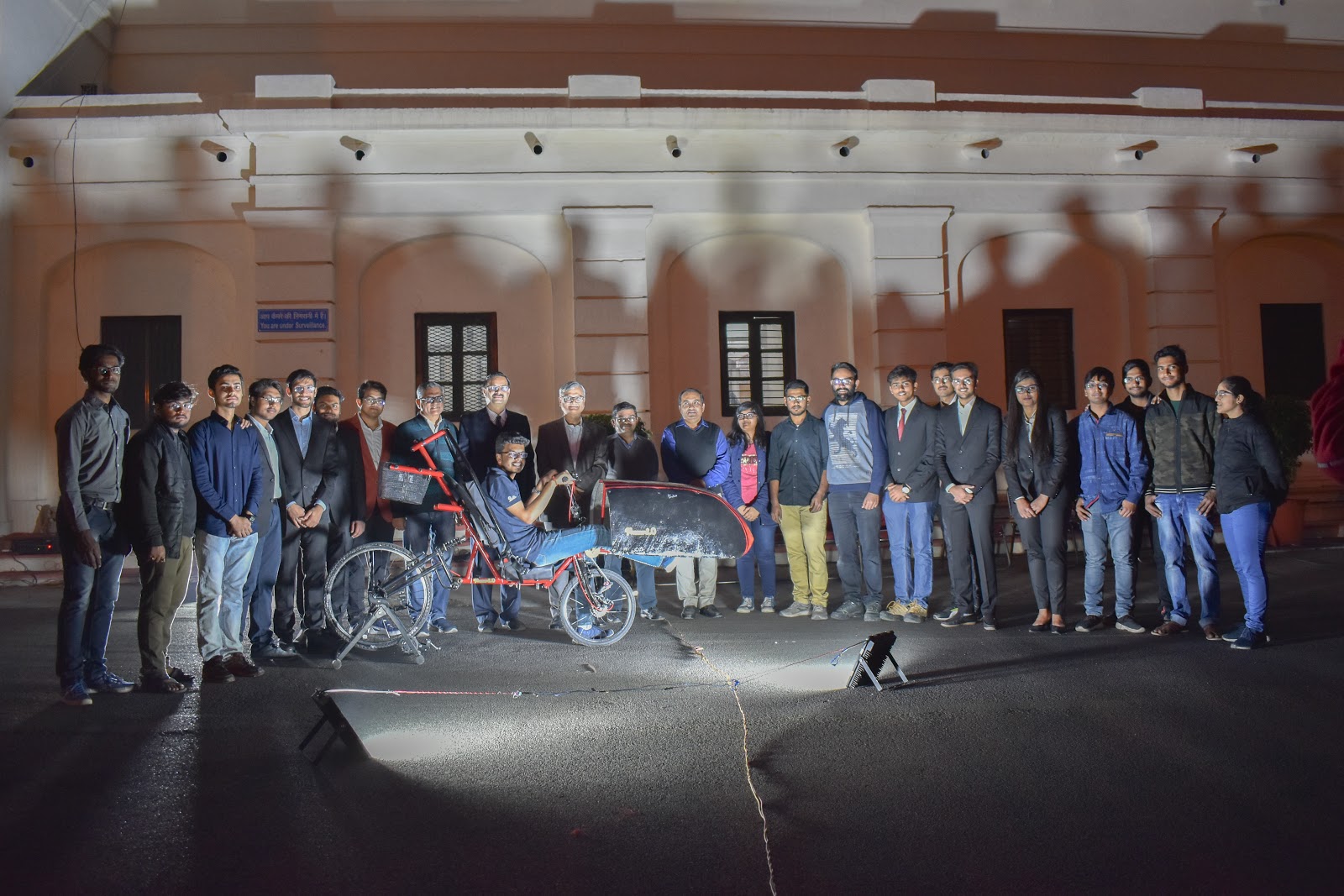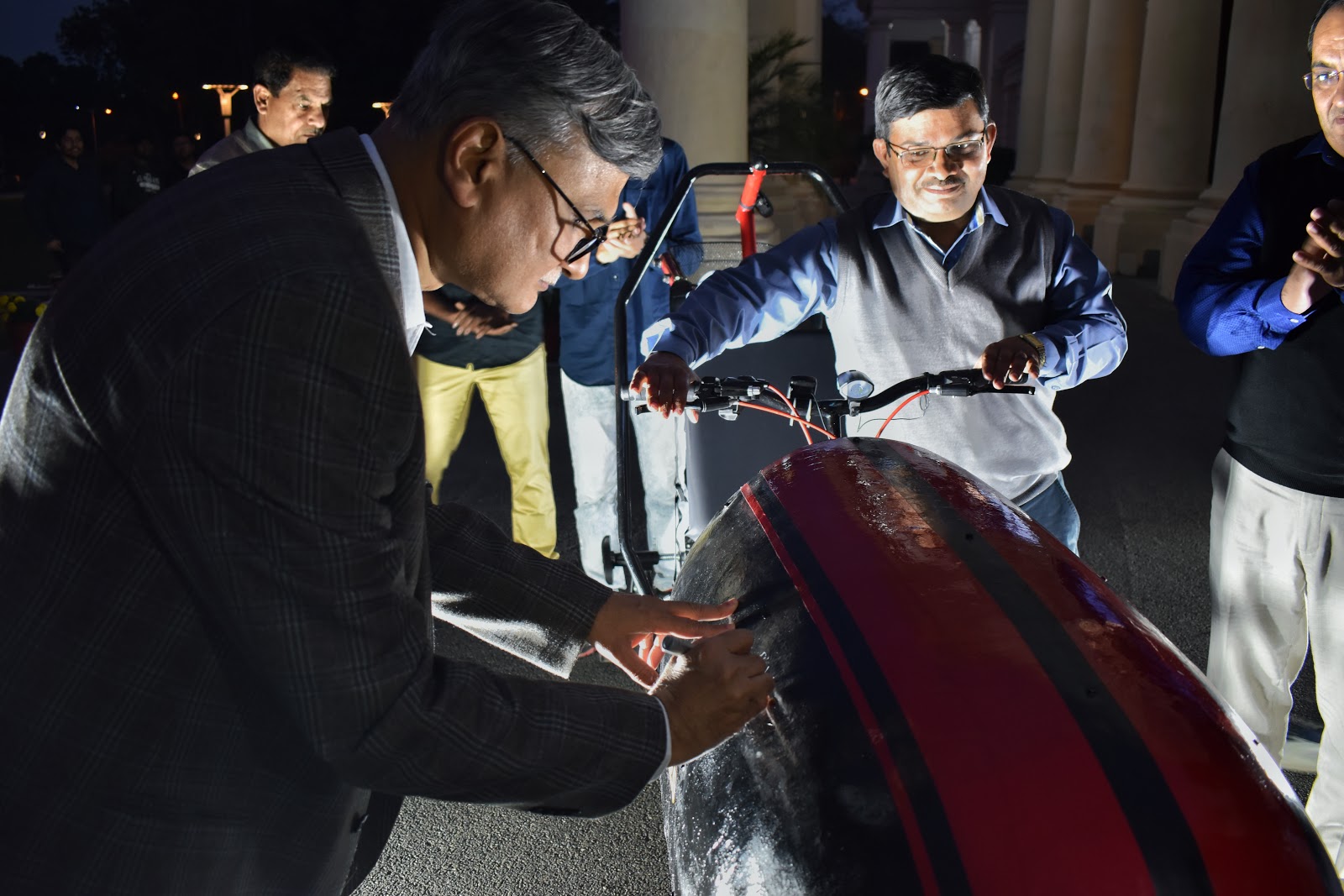

Body of IITR

IIT Roorkee’s Human Powered Vehicle Challenge team (HPVC) has been participating in E-fest, a national competition hosted by American Society of Mechanical Engineers (ASME) for the last three years. Each year, the event sees teams across the nation attempt to engineer a vehicle from scratch that is practical and eco-friendly. In the HPVC, students work in teams to design and build immaculately engineered and highly efficient vehicles for everyday use—whether it be commuting to work or to carrying goods to market.
All set out, Prancer 2.0 was unveiled by the honourable Director Dr Ajit K Chaturvedi.
WO : What exactly is E fest and where is it being held this year?
HPVC Team : Basically ASME is the governing body of ours.It stands for American Society of Mechanical Engineers, which allows us to form local student chapters. So E-fest is their annual competition held in different parts of the world, we participate in the asia-pacific region event and it would be held between 28th Feb and 2nd March at Marwadi University, Rajkot.
WO : What is the history of IIT roorkee in this competition?
HPVC Team : It is the 11th year since ASME IIT Roorkee Chapter’s was formed..We are participating in the ASME E-FEST Asia Pacific for the third time.We were ranked 18th overall out of the 40 teams last time and are expecting a better result this time.
WO : Tell us about the various competitions that will be held here
HPVC Team : HPVC is the biggest event in the E-fest. Their other events include the Student Design challenge , which we are also participating in. There’s also IM 3D, where you compete with 3D printed models. Apart from this there are several paper presentation and poster presentation competitions and some fun events.
In the HPVC, first we have to submit a qualification report, out of which they shortlist around 50 teams for the final event which we are going to Rajkot for.
WO : What are the various levels of testing to pass to succeed?
HPVC Team : It is actually a 3 day event. The first day is mainly design checks and specifications, which includes a design presentation and both static and dynamic inspection of the vehicle such as speed events, turning radius events and other safety checks. On day 2 we have the drag event which is focused on testing the maximum speed with head to head races between the vehicles in several knockout stages and on the last day there is the endurance event that continuously runs for two and a half hours where the built quality of the hpv is tested with several obstacles and tasks that are to be completed and the one with the maximum number of laps at the end is declared the winner.
WO : How different is an HPV(Human powered vehicle) from a normal cycle?
HPVC Team : You might have observed that in a normal upright cycle the rider is essentially in upright position. Riding cycle continuously for long time like 4-5 hours in this position can cause some serious problems like back pain, saddle sore, etc. In our HPV, the rider sits in the recumbent position that is in laid back position. Apart from alleviating problems like back pain, saddle sore, etc, this position is optimum for riding a bicycle as there is maximum utilization of muscle strength (thigh muscles) making it more comfortable to ride. This position also gives different options for the drivetrain mechanism. The recumbent position also provide us an aerodynamic advantage over upright position. We can achieve streamline shape in recumbent position and after incorporating an aerodynamic fairing in our vehicle we can significantly reduce the drag force, which ultimately helps in achieving speed much higher than normal cycle.

WO : How long have you been preparing for the event?
HPVC Team : HPVC 2020 was a eight month long rigorous journey. We also had insights from our previous submission.The designing and prototyping phase was almost four months long, and the next three months was all rigorous, hard core manufacturing follwed by the testing phase.We started from scratch and then we came up with the final vehicle.
Currently we are completely funded by the institute although we have been trying to get sponsorship for the coming year.
WO : What are the effective changes in this year’s model when compared to last year’s? What is the strategy?
HPVC Team : There are a lot of innovations brought forth this year. The main focus was to increase the ergonomic ability of the vehicle and thus features such as adjustable steering angle and movable seat were incorporated to accommodate riders of different heights. Rear suspension was added for the first time in our design to improve the off road riding experience of the vehicle and making it more usable in real life riding conditions. GRP(Glass Reinforced Plastic) was used to manufacture the fairing for the vehicle to increase its aerodynamic design without adding much to the total weight. All the above changes narrowed down to achieve the goal of making a rider friendly vehicle so that each rider could give his maximum effort in the racing events and thus increasing the chances of winning.
WO : How fast is your HPV?
HPVC Team : In the controlled conditions,in our campus we have reached 39km/hr, and the theoretical speed limit that we had come up with was around 42 km/hr. So we have reached almost the maximum.
WO : Do any accidents occur on the day of the competition?Anything that you know about?
HPVC Team : Yes, accidents do occur during the event involving failure in the vehicle or improper judgement from the rider. Previous year there was a head on collision between two vehicles not during the race but during the practise hours in the evening time but thankfully neither the vehicle nor the rider from both sides were harmed.
WO : How safe is it?
HPVC Team : The first priority in the judging criterion of the vehicle is safety.. The roll cage that we manufacture is actually designed so that no part of the rider’s body actually touches the ground in case the vehicle misbalances or falls. Additional safety features are also required to justify the safety of the rider and the other people on the road. We are required to submit a safety video where we have to depict all the safety features which are then verified in the static inspection held during the event.
WO : What are the major difficulties you actually face while working as a team?
HPVC Team : It’s a eight month long program, which needs patience and dedication. Proper planning and coordination amongst the team members is important for the smooth functioning of the project. You don’t get all the custom made parts here at Roorkee so logistics is a great difficulty here. Also in the designing aspect ,as it is a completely new design, there is a lot less documentation available on the internet. So prototyping every other thing in the HPV is required. We made about six to seven prototypes to get the final dimensions and designs.
WO : You have been participating for the last three years, which institutes are gonna be tough competitors?
HPVC Team : Teams learn from there experiences and each year we have new top rankers. Teams from VIT, Chandigarh University and NMIMS have been consistent over the past few years and will be there to pose a tough competition.
WO : What are your future plans?
HPVC Team : We are planning to take part next year, with few more innovations to come. We will be working on a self funded and self sufficient HPV.
It has been a great experience, you learn a lot of things and we take our vehicle as a product and at this stage, it’s quite easy to convert this into a market viable product.